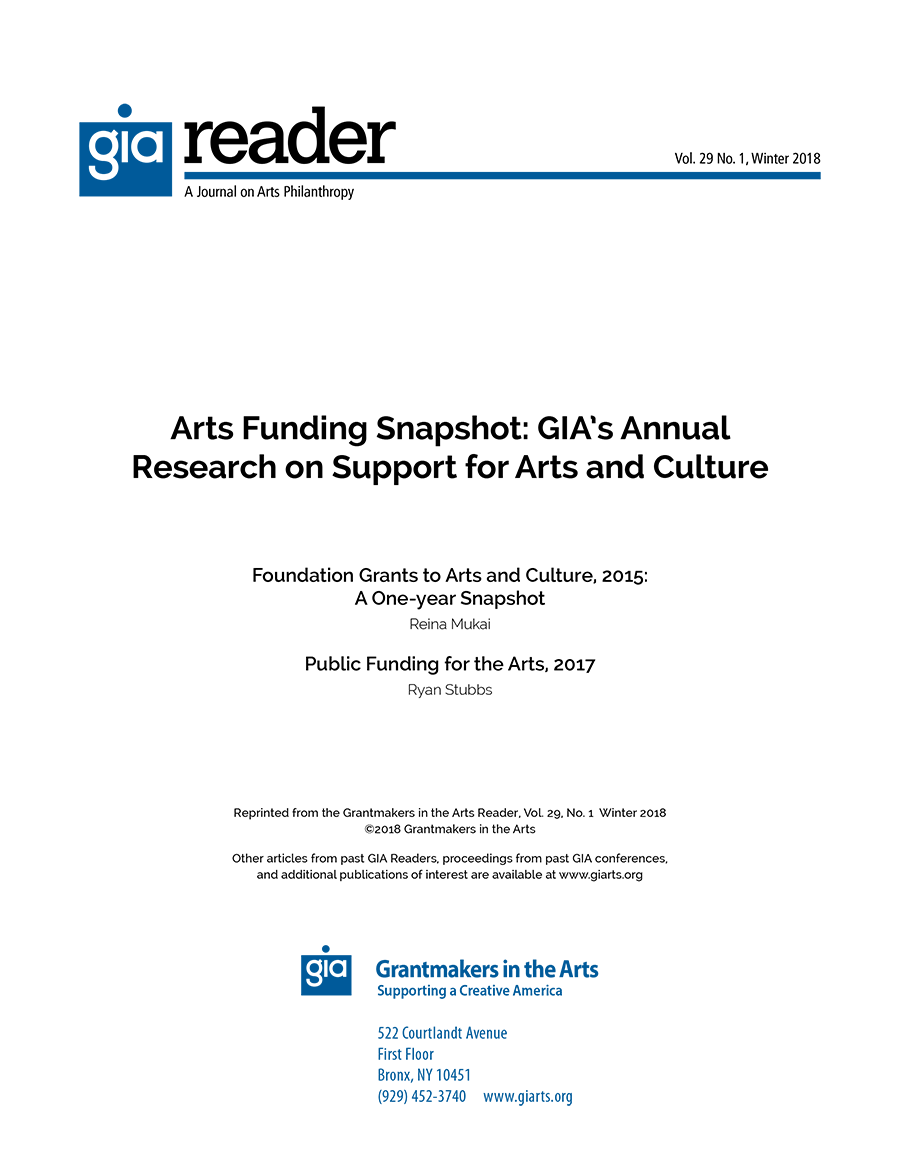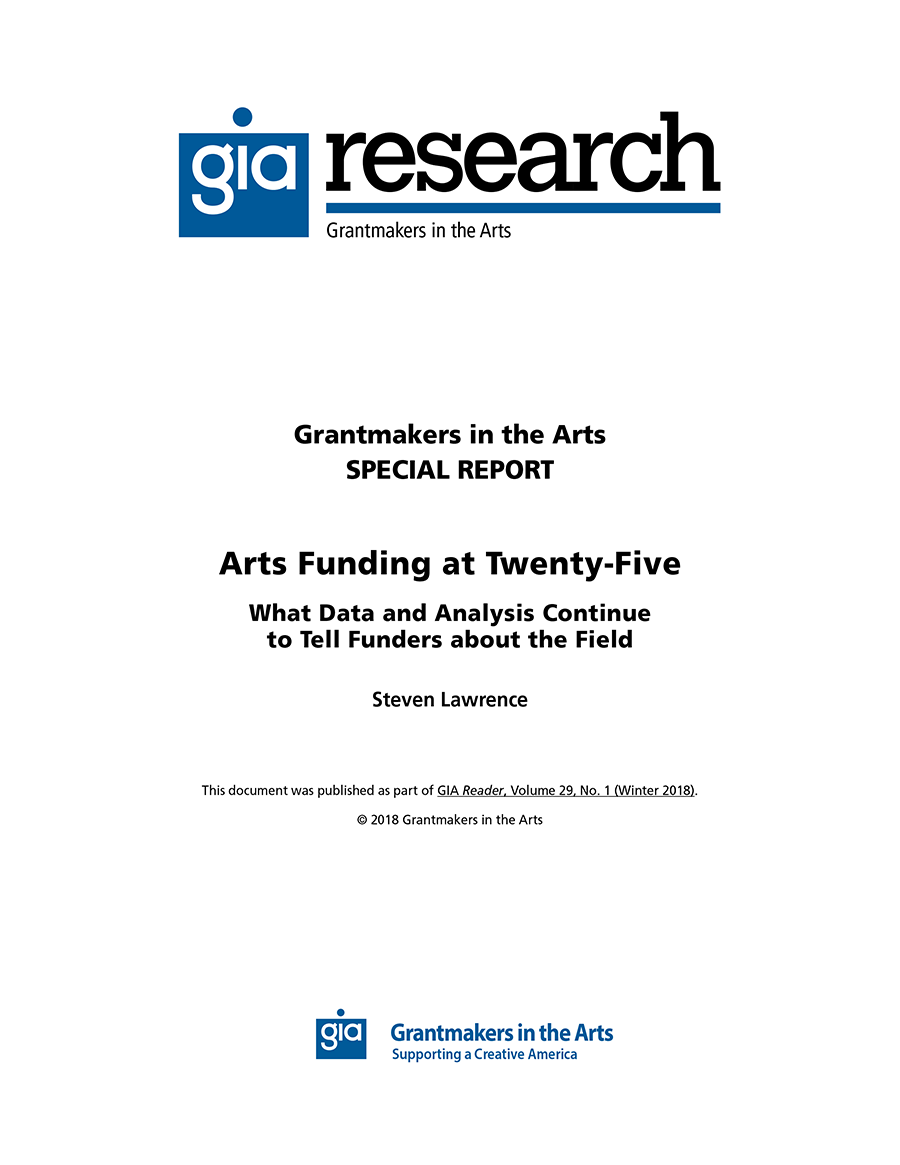GIA Reader (2000-present)
GIA Reader (2000-present)
The arts and culture sector continues to have conversations on multiple levels about how to advance the causes of equity, inclusion, and diversity. The discussion is not new, but the momentum toward implementing clear action steps is building. A new level of understanding of the ways in which racial and social inequities are the result of complex systemic issues has given rise to a realization that the path to truly effective solutions will require deep, and deeply challenging, institutional change.
Read More...How MAP took concrete steps to enact greater racial equity in our grantmaking by incorporating Agile practices in our application processes
Read More...In this moment of upheaval, challenge, and resistance for our country, the phrase “speaking truth to power” has taken on a new urgency. Rarely asked amid the fervor pervading the corner offices and Twitter feeds of so many of our foundations and other civic institutions in recent months, however, is an important question: Where does our “truth” come from? How do we make judgments about truth in so subjective a field as arts and culture?
Read More...As arts funders, we know that extensive research has shown that the presence of arts and culture activities at the neighborhood level can improve health and safety and promote a sense of well-being among residents. But how do we identify what activities already exist in a community and, as important, where there are gaps so we can be proactive in advancing a community’s livability?
Read More...In early 2016, I became president of the Jerome Foundation, following Cindy Gehrig’s remarkable thirty-seven-year tenure. With so many changes in the world at large as well as in the arts, our board of directors was eager to explore these changes, debate what the future might hold, and engage in self-scrutiny as a prelude to setting a new strategic framework to guide Jerome’s grantmaking during our next chapter.
Read More...Social movements need the arts. Should we ask tougher questions to optimize their influence?
Creative voices, widely and rightfully credited as moving “hearts and mind,” are increasingly understood as playing a core role in speaking to, supporting, or even triggering broader social change. Talented storytellers are disrupting the status quo, fostering new connections, challenging dominant narratives, sharing bold visions for equitable and joyful futures, and creating vehicles for action.
Read More...Download:
![]() Arts Funding Snapshot: GIA’s Annual Research on Support for Arts and Culture (332Kb)
Arts Funding Snapshot: GIA’s Annual Research on Support for Arts and Culture (332Kb)
Download:
![]() Arts Funding Snapshot: GIA’s Annual Research on Support for Arts and Culture (332Kb)
Arts Funding Snapshot: GIA’s Annual Research on Support for Arts and Culture (332Kb)
Download:
![]() Arts Funding at Twenty-Five (318Kb)
Arts Funding at Twenty-Five (318Kb)
Introduction
The easy convenience of typing a few key words into a search box and promptly being immersed in data can make one forget that this capability has existed for a remarkably short period of time. Just twenty-five years ago — a point in time well within the recollection of most members of the arts and culture sector — Stanley N. Katz, then president of the American Council of Learned Societies, observed, “the serious study of arts philanthropy is less than a generation old, and we are just beginning the sorts of data collection and analysis…we need to make sound judgments about the field.”1
Read More...Do you think that we are living in a zeitgeist of catalytic change? I have heard the word catalytic used so frequently that I find myself accessorizing moments with this adjective as if it holds the weight of tectonic shifts. It seems to promise the kind of change that either redirects historical systems of oppression toward equity — gradually erasing calcified notions of otherness that fuel supremacist behaviors — or catapults us back into a time where Flintstones-like ideals become presidential norms.
Read More...

